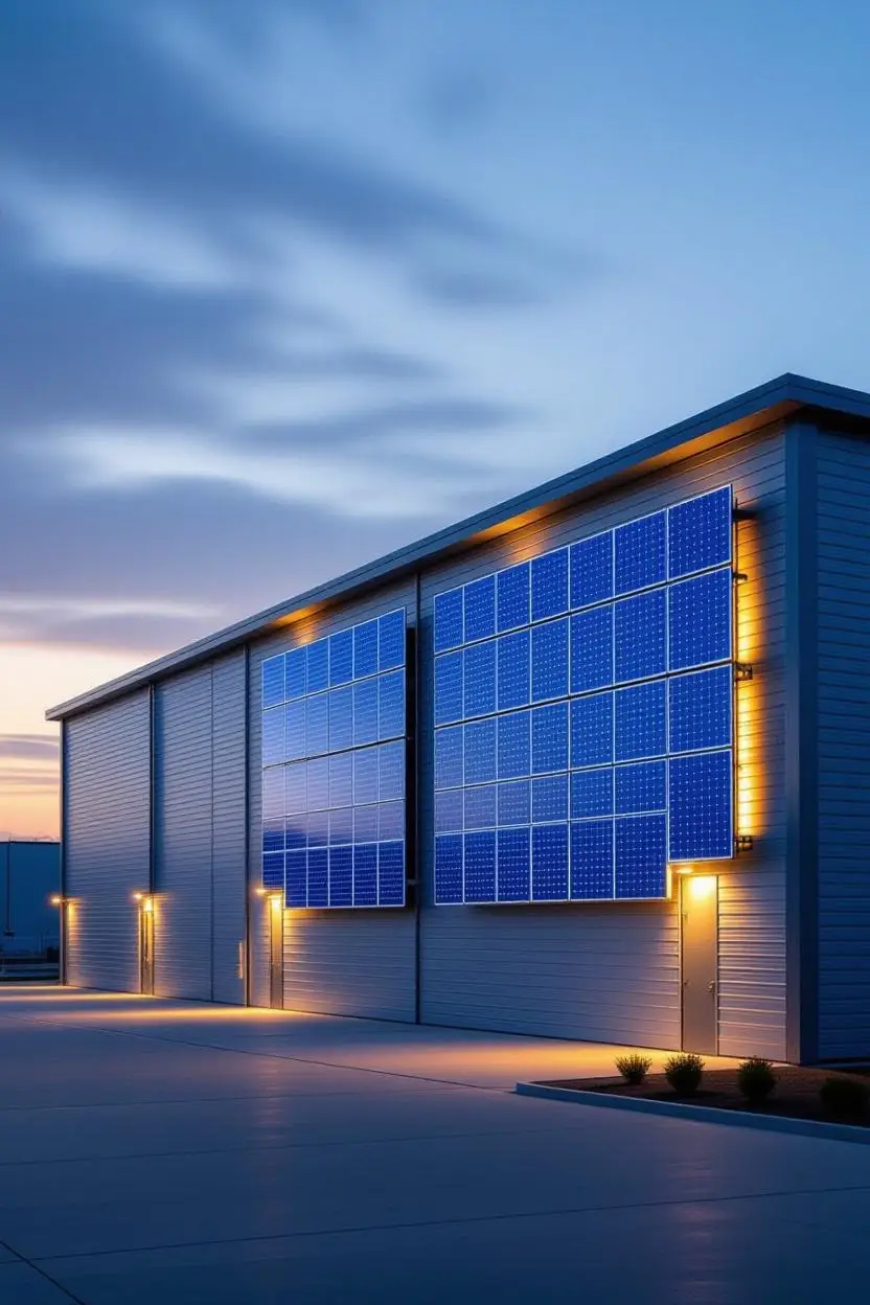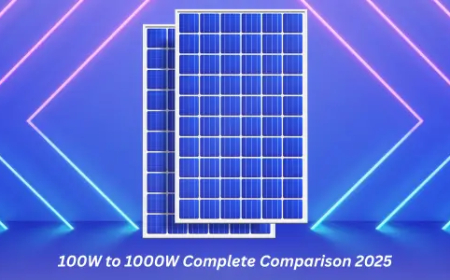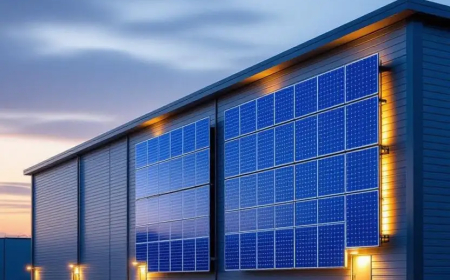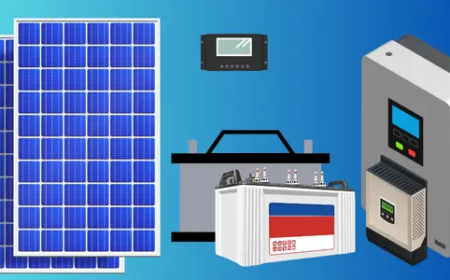Flexible Solar Panels Guide for Commercial and Residential
The solar energy industry is experiencing a revolutionary transformation with the introduction of flexible solar panels.

The Ultimate Guide for Commercial and Residential Applications
The solar energy industry is experiencing a revolutionary transformation with the introduction of flexible solar panels. These innovative photovoltaic solutions are changing how businesses and homeowners approach renewable energy, offering unprecedented versatility and installation possibilities that traditional rigid panels cannot match.
What Are Flexible Solar Panels?
Flexible solar panels, also known as bendable solar panels or thin-film solar modules, represent a breakthrough in photovoltaic technology. Unlike conventional rigid panels made with glass and aluminum frames, flexible solar cells are manufactured using lightweight materials that can conform to curved surfaces and non-traditional mounting locations.
These portable solar solutions are revolutionizing energy capture, particularly in situations where traditional rigid panels cannot be used, including camping, portable power solutions, building-integrated photovoltaics, and curved surfaces like vehicle roofs.
How Flexible Solar Technology Works
Flexible photovoltaic panels utilize advanced materials such as amorphous silicon, CIGS (Copper Indium Gallium Selenide), or monocrystalline cells mounted on flexible substrates. Premium models feature ETFE coating rather than cheaper PET plastic, with HPBC flexible panels achieving 20-22% module efficiency, approaching the performance levels of traditional rigid panels.
The construction typically includes multiple layers designed for durability and weather resistance. These panels are engineered to withstand environmental challenges while maintaining their lightweight profile, making them ideal for applications requiring minimal structural support.
Efficiency and Performance in 2025
The efficiency gap between flexible and rigid solar panels continues to narrow significantly. Premium flexible solar panels in 2025 achieve up to 22.5% efficiency for monocrystalline technology and 19% for CIGS technology, making them increasingly competitive with traditional options.
Flexible solar panels typically achieve 15-18% efficiency under ideal conditions, compared to approximately 20-23% for rigid panels. However, the gap continues to shrink as manufacturers invest in research and development, with some breakthrough technologies pushing boundaries even further.
Performance characteristics include:
- Power output ranges from 50W to 400W depending on panel size
- Temperature coefficient comparable to rigid panels
- Waterproof and weatherproof construction for outdoor applications
- Annual degradation rates of 2% or less with 8-year product warranties for premium models
Commercial Applications of Flexible Solar Panels
Apollo Power operates the world's largest factory for flexible solar panels, producing at commercial scale with designs specifically for industrial, commercial, and transportation applications.
Key Commercial Use Cases:
Building-Integrated Photovoltaics (BIPV): Flexible solar cells have significant market potential for photovoltaics integrated into buildings because they are lightweight, shockproof, and self-powered. They can be installed on curved roofs, walls, and architectural features where traditional panels are impractical.
Transportation and Fleet Applications: Commercial vehicles, delivery vans, buses, and transportation fleets benefit from roof-mounted flexible panels that provide auxiliary power without adding significant weight.
Temporary Installations: Construction sites, event venues, and temporary facilities can deploy flexible solar solutions quickly without extensive mounting infrastructure.
Marine and Maritime: Boats, yachts, and marine vessels utilize bendable panels that conform to curved deck surfaces while resisting saltwater corrosion.
Residential and Portable Applications
Beyond commercial use, flexible photovoltaic modules excel in residential scenarios where traditional panels face limitations:
For private homes and businesses, these panels provide an unobtrusive renewable energy source that eliminates the need for extensive drilling or bulky mounting systems, with easy installation that minimizes disruptions.
Popular residential applications include:
- RV and camper installations for off-grid travel
- Portable power systems for camping and outdoor activities
- Emergency backup power solutions
- Garden structures and pergolas
- Unconventional roof shapes and materials
Installation Advantages
Semi-flexible and fully flexible solar panels offer distinct installation benefits:
Versatile Mounting Options: These panels can be installed on various surfaces including curved, uneven, or non-standard areas. They're particularly suitable for boats, recreational vehicles, camping gear, and unique architectural applications.
Simplified Installation Process: Without heavy mounting racks and complex hardware, installation time and labor costs decrease significantly. Many models feature adhesive backing for direct mounting.
Reduced Structural Requirements: Flexible solar modules can be used on curved roofs or locations where rack mounting systems don't make practical sense, and can be installed on building walls in areas where land or rooftops cannot accommodate solar.
Cost Considerations and ROI
While flexible solar panels typically cost more per watt than traditional panels, their total installed cost can be competitive when factoring in reduced mounting hardware, simplified installation, and applicability to otherwise unsuitable locations.
According to experts from the US National Renewable Energy Laboratory, production of perovskite panels will be ten times cheaper than silicon counterparts, with added advantages of flexibility and transparency. This suggests promising future cost reductions.
Investment considerations include:
- Higher upfront cost per watt compared to rigid panels
- Lower installation costs due to simplified mounting
- Access to locations where traditional solar isn't feasible
- Quality panels lasting 20-25 years with efficiency above 80% after 20 years
Lifespan and Durability
Modern flexible solar panels demonstrate impressive longevity when properly selected and installed. Premium manufacturers offer warranties ranging from 5 to 8 years for product defects, with performance warranties extending 20-25 years.
Durability factors include resistance to impacts, flexibility without cracking, UV protection, and weatherproof construction that handles rain, snow, and temperature extremes. Proper selection of coating materials, particularly ETFE rather than PET, significantly impacts long-term performance.
Choosing the Right Flexible Solar Solution
When selecting flexible solar panels for commercial or residential applications, consider these factors:
Efficiency Requirements: Match panel efficiency to available space and power needs. Higher efficiency models cost more but generate more power per square foot.
Application Environment: Marine applications require saltwater-resistant materials, while building installations prioritize aesthetics and weather resistance.
Budget Constraints: Balance upfront costs against long-term energy production and installation savings.
Warranty Coverage: Prioritize manufacturers offering comprehensive product and performance warranties.
The Future of Flexible Photovoltaics
The flexible solar panel market continues evolving rapidly with technological advances improving efficiency, reducing costs, and expanding applications. Emerging technologies like ultra-thin silicon wafers and advanced perovskite materials promise even greater flexibility and performance.
New bendable solar cells achieve 21.6% efficiency even under heat and humidity conditions, with goals for building-integrated photovoltaics and Internet of Things devices.
As renewable energy adoption accelerates globally, flexible solar panels will play an increasingly important role in achieving sustainability goals. Their unique advantages make them indispensable for applications where traditional panels cannot function, opening new possibilities for solar energy generation.
Conclusion
Flexible solar panels represent a significant advancement in renewable energy technology, offering commercial and residential users unprecedented installation versatility. While efficiency and cost continue improving, these bendable photovoltaic solutions already provide viable alternatives for countless applications where traditional rigid panels fall short.
Whether powering commercial facilities, recreational vehicles, marine vessels, or unique architectural installations, flexible solar technology delivers clean, sustainable energy with minimal installation complexity. As the technology matures and costs decline, flexible solar panels will become increasingly mainstream, driving broader adoption of renewable energy across diverse sectors and applications.
What's Your Reaction?
 Like
0
Like
0
 Dislike
0
Dislike
0
 Love
1
Love
1
 Funny
0
Funny
0
 Angry
0
Angry
0
 Sad
0
Sad
0
 Wow
0
Wow
0





